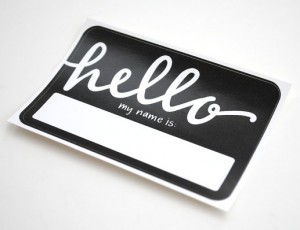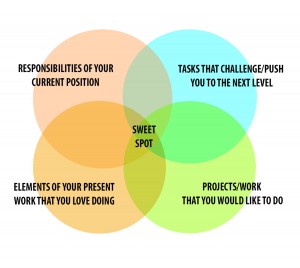By Caroline M. Cole
Poking others on Facebook and sending connect invites on LinkedIn, we have more opportunities to extend our social and professional networks. Yet while connections and interactions increasingly take place online, there are times we need to make face-to-face introductions, such as client meetings, professional conferences, office parties, networking events, interviews, and social gatherings of all kinds. To the dismay of participants on both sides of the handshake, however, the art of introduction is waning.
Meeting others is the foundations of all relationships, and those who make strong first impressions are more likely to start those relationships on solid footing. Considering that first impressions can impact both initial and subsequent exchanges, this discussion examines how to establish and build reputations with a well-executed introduction.
Sensitive to social and professional hierarchies, conventional introductions dictate that subordinate individuals are always introduced to those with more status, prompting many to dismiss introduction rituals as elitist and discriminatory. To be fair, various introduction protocols—like many modern day manners—are tied to centuries old courtly behaviors, where individuals of all ranks were “presented” to a monarch. As such, we do find traces of royal ceremonial customs and their corresponding prejudices in this courtesy, but most of the ornate and haughty components have faded if not disappeared all together, leaving a practice that, as its core, uses deference to acknowledge and build esteem between and among all participants.
Letitia Baldrige, chief of staff for Jacqueline Kennedy and author of Letitia Baldrige’s New Complete Guide to Executive Manners, observed that deference is a form of respect and, consequently, the foundation of protocol: “There is nothing artificial and foppish about it,” she writes. “It is rather a plain and simple recognition of hard work, quality, and achievement.” It is this recognition that informs who is introduced to whom that some people, especially in an “everyone-gets-a-trophy” culture, consider off-putting.
Context matters, of course, but we demonstrate deference and, hence, respect for the older, more experienced, or more senior individuals by introducing others to them, prompting us to introduce:
junior executives to senior executives,
employees in our company to its customers and clients,
children to adults,
colleagues in our organization to colleagues in another organization,
students to faculty members,
non-board members to board members,
non-officials to elected officials,
laypersons to religious dignitaries,
lower-ranked military personnel to senior-ranked military personnel,
guests to host, and
younger individuals to older individuals
All things being equal, we would introduce the person we know best to the person we know least.
Contrary to what some may believe, gender is not a status driving introduction order. Historically, men were introduced to women but, nowadays, introductions between the sexes are guided by seniority in position or title in a given context, or by age; some countries, however, do use gender to guide the introductions of ambassadors and other dignitaries.
For ease in making introductions, it can help to mention the senior person’s name first, thereby identifying that individual as the person to whom others will be presented, as the following examples demonstrate:
“JoAnn, I’d like to introduce (you to) Andrew Rodriguez, our intern for the summer. Andrew, this is JoAnn Mosley, AmiCorps’s director of marketing.”
“Bill, this is Tyler Rossi, managing director of our technical division. Tyler, this is William McGregor, who’s with Energy Source; he accepted our invitation to today’s software demonstration.”
“Mom, please meet Samantha Hardy, a friend from college. Samantha, this is Amanda Dixon, my mother.”
In the first example, the words “to you” are implied, making them unnecessary in the introduction itself, but the reference here makes the presentation of one person to another more evident.
Later we will examine how to build upon this basic structure to enhance the rapport between those being introduced but, for now, the ability to offer matter-of-fact details in our introduction demonstrates the esteem that we have for each person and that we encourage between them in this and later exchanges.
When introducing individuals to larger groups of people, we may need to modify our phrasing, but the overall structure of who is introduced to whom remains the same:
“Paul, I’d like to introduce some of our senior engineers. Daniel Patterson, Cassondra Lee, Victoria Martin, and George Roth, this is Paul King, of Devonshire and Martin, our newest client.”
or
“Daniel, Cassondra, Victoria, and George, please meet Beverly Thompson, our newest hire. Beverly, this Daniel Patterson, Cassondra Lee, Victoria Martin, and George Roth, some of our senior engineers.”
When individuals are of comparable rank, we would introduce the group to the solo person(s) coming into the discussion. For instance:
“Michael, I’d like for you to meet some of my friends from the building. Susan Wang, Mary Costello, and Tim Perry, this is Michael Devon, a friend from work.”
If, however, the group contains six or more individuals, we should only introduce a segment of the group to the newcomer, starting with those who are closest to us. Similarly, we should never lead someone around larger gatherings, introducing that person to everyone at once; instead, we should introduce the individual to one segment at a time, and then check in at a later point to introduce the individual to more people, as necessary.
These principles, encompassing the fundamentals of introductions, can encourage connections in most contexts, helping us develop a reputation for promoting networks that can be of service or interest to others. Yet even these efforts can be strengthened with the following actions.
• Use full names and, if relevant, titles. Allowing us to single out individuals from larger clusters of people, names make it possible to interact on a more personal basis, but individuals should decide how familiar they are willing to be with others. Therefore, when introducing others, we should always use their full, professional name—even if we may know them by more informal references. For example, even if we address or refer to Patrick, Elizabeth, and Charles as Pat, Beth, and Chas, respectively, in our own exchanges, we should still introduce them as Patrick, Elizabeth, and Charles. Such introductions may seem fussy, but they give others the opportunity to decide how they would like to be viewed by the people they have just met.
When relevant to the context, we might also offer the person’s title to clarify the person’s role or affiliation to others. For instance, it would be appropriate to note that someone is the CEO, Director of Human Relations, Managing Director, Senior Analyst, Dean of Academic Development, and so on at work, at a conference, or in some other professional forum. Beyond such venues, however, social titles would be more appropriate—except when introducing elected officials and medical doctors; these individuals are introduced in professional and social contexts with their professional titles, such as “… this is Senator Dianne Feinstein,” “…this is Judge Madison Kilmer,” or “…this is Dr. Robert Goodly.” Doctors of philosophy, on the other hand, are not called “Dr.” or “Professor” beyond academic forums.
• Offer a context-appropriate detail about each person. The most effective introductions allow participants to have a conversation in the absence of the person who introduced them. To help in this effort, we should offer a detail or two about each individual during the introduction. Yet, because the details we provide are often the starting point for people to discover a common ground, context matters when deciding which details to offer.
If, say, we are introducing people in the office or at a professional event, we might mention each person’s title, organization, expertise, or professional interests to help spark a connection, as evident in the following examples:
“Claire, I would like to introduce William Tsing, a recent graduate of Stanford who will be working in Gurdip Sugumaran’s lab for a few months before heading to med school in September. William, this is Dr. Claire Harper, our Director of Research, who oversees all of the labs in this division, including Dr. Sugumaran’s.”
“Julius, please meet Harper Fallon, from marketing; he was just brought onto the Genevieve Project team to help Nicholas with the social media components. Harper, this is Julius Harlow, from media development; he’s presently exploring ways to use Facebook to increase the feedback we get from customers.”
“Michele, I’d like for you to meet Mary Stieglitz and Jack Dreyfuss. They just left Newberry and Associates to open a design firm in Atlanta, specializing in commercial properties. Mary and Jack, this is Michele Greer, senior designer at Rafael Interiors.”
“Arthur, I’d like to introduce Calvin Redmond, a programmer at Hagerty Technologies that’s helping to move his company’s data to osCommerce. Calvin, this is Arthur Doi, one of the founders of BuyItNow; he’s in town for a planning session with the organizers of next year’s Internet Retailer Expo.”
Whereas work environments tend to promote quid pro quo professional alliances, making work-related details of value, social contexts tend to downplay opportunities for “shop talk” so as to encourage a more light-hearted, congenial atmosphere. Therefore, although references to work can help clarify relationships, it can be more strategic to promote conversations about topics beyond the office in more general forums; mentioning hobbies or other interests can encourage such discussions:
“Rob and Leann, I’d like to introduce Pat Shapiro, a colleague from work, who just returned from a 12-city tour of Eastern Europe. Pat, this is Rob and Leeann Muller, Tom’s coworkers at Smidgen, and they are avid travelers.”
“Ruth, may I present Beatrix Miller, a friend since high school. She is been doing glasswork for a few years but has recently taken up oil painting. Beatrix, this is Ruth Schultz, one of my neighbors, an art enthusiast with a growing collection of twentieth century American lithographs.”
Granted, conversations may ultimately shift to work-related topics, but participants should decide whether to move the discussion in that direction.
In deciding which details to use in an introduction, we should consider the people we are introducing. The details we might use when introducing someone to a sports fanatic may be different from the details we use to introduce that same person to a philatelist; however, whichever details we provide should be appropriate to share in public. Similarly, we should give only enough information to help make a connection, thereby allowing the newly introduced individuals to learn more about each other on their own and move the conversation in the ways they choose.
A final note about contextualizing details concerns the order in which we provide that information. In making introductions, the temptation may be to offer details before providing the person’s name, especially when introducing people who may be related to us. For example, we might say, “Jane, I would like to introduce my brother, Todd Jenkins.” Such introductions, however, emphasize our relationship with the person, rather than the person on his or her own merit. By providing contextualizing details after giving the person’s name, we emphasize the identity of the individual and subordinate supplementary details:
“Jane, I would like to introduce Todd Jenkins, my brother. Todd, this is Jane Healy, my supervisor at Picco Ltd.”
“Mark, please meet Christopher Griffin, my assistant. Christopher, this is Mark Jasper, Operations Director and my mentor during my early years at the company.”
• Make eye contact and enunciate. Eye-contact is a subtle way of conveying respect, indicating that we are focused on the people in our immediate presence. Therefore, when making introductions, we should look at the person needing the information, rather than the person about whom we are speaking or, worse, other people in the room. Furthermore, we should enunciate to ensure others get the information we’re providing about the people they are meeting.
• Be honest. In making introductions, we may find that we have forgotten someone’s name—in full or in part. If it’s possible to discretely inquire about someone’s name before making introductions, we should do so. If, however, our mind goes blank in the middle of an introduction, we should admit it; for instance, “I know we have met before, but I can’t recall your name at the moment.” Everyone can forget names on the spot, so recognizing our humanness can keep the mood livelier than stalling or otherwise trying to cover up what becomes increasingly noticeable during the awkward pauses.
If we’re the forgotten party, we should resist calling attention to that fact with responses like, “You’ve forgotten my name?!” or “I’ll wait… .” Instead, we should help the person save face by jumping in, giving our name, and offering a brief reference to how we know the host—who may or may not be the person making the introduction. For example:
“Hello, I’m Ken Tompkins, one of Dean’s sales reps.”
“Hi, I’m Jenny Maverick. Dana and I met last summer while playing in the Oakland softball league.
This strategy also works in contexts where there may be no one to introduce us, say at a networking event or in contexts where unfamiliar people join a conversation in progress. In such cases, we should wait for a pause in the discussion and take the initiative to give our name and a context-appropriate detail that connects us to the event or its host, such as:
“Hello, I’m Emma Greenstone, one of the incoming analysts that will be working in the Chicago office.”
“Hello, my name is Jeremy Brett. I’m a senior in microbiology interested in talking with companies that specialize in biotech.”
“Hi, I’m Brendan Davenport. I’ve been a friend of the groom since middle school.”
Offering a confident, sincere handshake as we are being introduced or as we introduce ourselves can reinforce our image during the exchange (see “Shake Hands with Sincerity and Confidence”).
• Receive and make corrections graciously. If someone notes that we have made a mistake during an introduction, we should gratefully and amiably accept the information to help us make subsequent introductions correctly. If we have been miss-introduced with the information that does not concern our name (for example, being introduced as Joan, rather than Jean), the most appropriate response is a subtle, one-on-one correction to the person who received the incorrect information; for example, “I prefer ‘Thomas’ rather than ‘Tom,’” or “a minor correction… I am at Norco Ltd.” If inaccurate information does concern our name, we should immediately and matter-of-factly make the correction to minimize repeated inaccuracies that could further embarrass the person making introductions.
• Make them. Because successful communication is built on common ground, it is challenging for people to engage in even the most mundane conversations when they are unsure of who is their company. Introductions encourage a common ground by explicitly inviting people to learn more about each other. Therefore, to promote the smoothest communication from the beginning, we should resist presuming that everyone knows each other and introduce the individuals in our company.
* * *
Introductions provide an opportunity for people with mutual interests to meet and, ideally, leave the exchange in a better position than when they entered it. Some introductions, for instance, can lay the foundation for a business alliance or partnership down the road. Some might encourage a friendship, and others may simply provide an enjoyable conversation between individuals who may never meet again. Whatever the outcome, the introduction aims to enhance the participants’ lives, if only for a moment.
In the process, introductions allow us to express our esteem for the people we are introducing. The order in which we introduce people, the details we share about each party, and the attention we give each individual during an introduction say as much about ourselves as we do about the people we are connecting. Therefore, by engaging these practices as we make introductions, we not only help other people shine in the presence of a new acquaintance, but we indirectly establish and enhance our own reputation.
Working toward Areté…
Use the space below to share your comments and observations about introductions and ways to make the best impression in this exchange.









